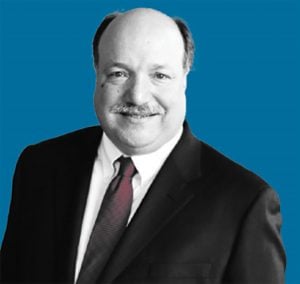 Many people make the mistake ofthinking that an emergency fund is only important while they'reworking. (Photo: Shutterstock)
Many people make the mistake ofthinking that an emergency fund is only important while they'reworking. (Photo: Shutterstock)
Can an old-fashioned financial planning adage be the answer tothe feared sequence of return risk? Those who develop financialwellness programs may be interested in the answer. It turns out,the same vehicle can protect people both before and afterretirement. What is it? And why (and how) can it effortlessly servethis dual purpose?
|It's called the "emergency fund." The idea is as old as some ofthose dusty financial planning texts you haven't cracked open inyears (because everything is online now). It's a concept aspiringCFAs are taught: People should keep anywhere from six to 18 monthsof expenses stashed away in some safe, liquid account.
|Related: 5 best, 5 worst metro areas for beefing up youremergency savings
| Christopher Carosa,CTFA, is chief contributing editor for FiduciaryNews.com, a leadingprovider of essential news and information, blunt commentary andpractical examples for ERISA/401(k) fiduciaries, individualtrustees and professional fiduciaries.
Christopher Carosa,CTFA, is chief contributing editor for FiduciaryNews.com, a leadingprovider of essential news and information, blunt commentary andpractical examples for ERISA/401(k) fiduciaries, individualtrustees and professional fiduciaries.
The reason makes sense. Something bad might happen. It mayrequire ready cash. The number of months you choose to save dependson the risks inherent in your personal situation.
|For example, you might use this fund if you lost your job. Anemergency fund gives you money to live off of while you're tryingto find another job. If the economy is bad and a lot of people areout of work, it might take you longer to land a new job. In thiscase, having an emergency fund with 18 months' worth of expenseswould be a good idea. Likewise, if the economy is great andeveryone is getting hired, you might need only six months' worth ofexpenses to tide you over. Easy. Done. Move on to the nextthing.
|But here's where many make a big mistake. They think anemergency fund is only important while they're working. They thinkthey won't need it once they retire.
|If they're lucky, they may be right. But why risk the roll ofthe dice?
|The sequence of return risk implies you roll snake eyes the yearyou retire. But say the market (and your retirement fund) fallsprecipitously just as you are about to begin withdrawing from it.This drop blows up all your neatly packaged assumptions and you endup spending down your retirement account faster thananticipated.
|What if you kept that emergency fund around for retirement? Youcould use it to help alleviate the potential bad luck of retiringon the wrong side of the sequence of return risk.
|Here's how to do it. Slowly expand your emergency fund to covera minimum of two years' worth of expenses. Why two years? Because,on average, that's what you'll typically find it takes for themarket to recover from a bear market (20 percent drop).Incidentally, corrections (a 10 percent drop) are hardly a blip andthose losses are generally recovered in less than a year.
|If you can afford to, keep five years' worth of expenses in theemergency fund. That's how long it took to recover from the2007–2009 bear market.
|It turns out classic financial planning practices can provide ananswer to a modern retirement fear. The emergency fund is easy tounderstand and easy to implement. Use it as protection from thesequence of return risk.
|Read more:
Complete your profile to continue reading and get FREE access to BenefitsPRO, part of your ALM digital membership.
Your access to unlimited BenefitsPRO content isn’t changing.
Once you are an ALM digital member, you’ll receive:
- Critical BenefitsPRO information including cutting edge post-reform success strategies, access to educational webcasts and videos, resources from industry leaders, and informative Newsletters.
- Exclusive discounts on ALM, BenefitsPRO magazine and BenefitsPRO.com events
- Access to other award-winning ALM websites including ThinkAdvisor.com and Law.com
Already have an account? Sign In
© 2024 ALM Global, LLC, All Rights Reserved. Request academic re-use from www.copyright.com. All other uses, submit a request to [email protected]. For more information visit Asset & Logo Licensing.








